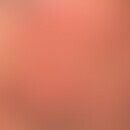DefinitionThis section has been translated automatically.
Whole body or local irradiation with UV rays (UVA broadband, UVA1, UVB or mixed UVA/UVB rays). Can be used in combination with light sensitizing substances as systemic or local photochemotherapy. S.u. PUVA-therapy and KUVA-therapy.
IndicationThis section has been translated automatically.
Among other things for the treatment of:
- Psoriasis
- parapsoriasis en plaques
- Pruritus
- prurigo simplex subacuta
- Mycosis fungoides (erythema and plaque stage)
- Vitiligo
- Pityriasis lichenoides chronica
- seborrheic eczema
- HIV-associated pruritic eruptions
- Pruritus in chronic terminal renal failure
- Prophylaxis of polymorphic light dermatosis
- Atopic eczema.
You might also be interested in
ImplementationThis section has been translated automatically.
Dose depending on skin type, if possible after determining the MED with the corresponding UV spectrum:
- UVB Broadband (initial dose):
- skin type I: 20 mJ/cm²
- Type II: 30 mJ/cm²
- Type III: 50 mJ/cm²
- Type IV: 60 mJ/cm².
- UVB narrow band (311 nm) (initial dose):
- skin type I: 200 mJ/cm²
- Type II: 300 mJ/cm²
- Type III: 500 mJ/cm²
- Type IV: 600 mJ/cm².
- UVA (initial dose):
- Skin type I: 0.5 J/cm²
- Type II: 1.0 J/cm²
- Type III: 1.5 J/cm²
- Type IV: 2.0 J/cm².
- UVA1 (dose per irradiation):
- Low-dose: 20≤50 J/cm² (initial 5 J/cm², increase dose by 5 J/cm² after every 3 sessions).
- Medium-dose: 50≤90 J/cm² per treatment.
- High-dose: 90-130 J/cm² per treatment.
Undesirable effectsThis section has been translated automatically.
Dermatitis solaris, phototoxic dermatitis; conjunctivitis, provocation of photodermatoses; actinic elastosis.
ContraindicationThis section has been translated automatically.
- Absolute AI: Infectious diseases, acute infections, venereal diseases, parasitoses.
- Relative AI: Acute dermatoses, acute episodes of chronic dermatoses, chronic venous insufficiency, collagenoses (except circumscript scleroderma), blistering dermatoses, advanced pregnancy.
Complication(s)This section has been translated automatically.
Note(s)This section has been translated automatically.
General guidelines for the implementation of a photo(chemo)therapy (recommendations of the DDG):
- Observe the indications and contraindications. Absolute contraindications are e.g. genetic defects with an increased sensitivity to light or an increased risk of skin cancer (Xeroderma pigmentosum, Cockayne syndrome, Bloom syndrome). Relative contraindications (possibly modified treatment regimes) are patients with convulsions (taking photosensitizing drugs), anamnestically known malignant skin tumors or with dysplastic melanocytic nevi.
- Informing the patient about the course of therapy, side effects (acute and long-term side effects). Written consent is essential.
- Before starting photo(chemo)therapy, it is recommended to determine the individual light sensitivity ( MED) or the minimum phototoxic dose ( MPD).
- The applied UV doses must be stated and recorded in exact radiation physical units (J/cm2, mJ/cm2).
- During therapy, patients must be monitored by a physician at regular intervals (weekly). Therapy success and NW must be documented in writing.
- In general, eye protection is required during therapy. In case of non-infection, the chronically light-exposed areas (face, neck, back of the hand) must also be protected (exception: mycosis fungoides).
- Phototherapy for children is possible at any age (eye protection). Strict indication necessary.
LiteratureThis section has been translated automatically.
- Carlin CS et al (2003) Efficacy of acitretin and commercial tanning bed therapy for psoriasis. Arch Dermatol 139: 436-442
- Enk CD et al (2003) Treatment of cutaneous leishmaniasis with photodynamic therapy. Arch Dermatol 139: 432-434
- Hölzle E et al (2003) Recommendations for phototherapy and photochemotherapy. JDDG 1: 985-1000
- Krutmann J (1991) Dermatological phototherapy. dermatologist 42: 407-414
- Krutmann J et al (1991) New aspects of UV therapy of atopic dermatitis. Dermatologist 42: 284-288
- Legate FJ (2003) Narrowband UV-B vs. medium-dose UV-A1 phototherapy in chronic atopic dermatitis. Arch Dermatol 139: 223-224
- Farewell M (2003) Psoriasis. Lancet 361: 1197-1204
- Man I et al (2003) The time course of topical PUVA erythema following 15- and 5-minute methoxsal immersion. Arch Dermatol 139: 331-334
- Markham T et al (2003) Narrowband UV-B (TL-01) phototherapy vs. oral 8-methoxypsoralen psoralen UV-A for the treatment of chronic plaque psoriasis. Arch Dermatol 139: 325-328
- Morton CA et al (2001) Photodynamic therapy for large or multiple patches of Bowen disease and basal cell carcinoma. Arch Dermatol 137: 319-324
- Silva SH et al (2006) Influence of narrow-band UVB phototherapy on cutaneous microbiota of children with atopic dermatitis. J Eur Acad Dermatol Venereol 20: 1114-1120
- Suchin KR et al (2002) Treatment of cutaneous T-cell lymphoma with combined immunomodulatory therapy: a 14-year experience at a single institution. Arch Dermatol 138: 1054-1060




